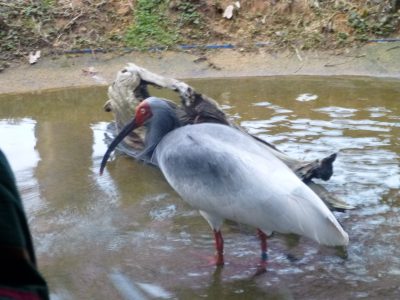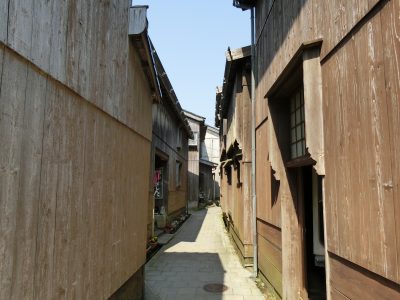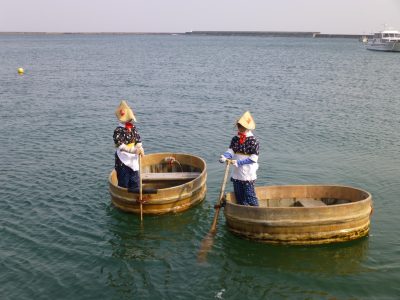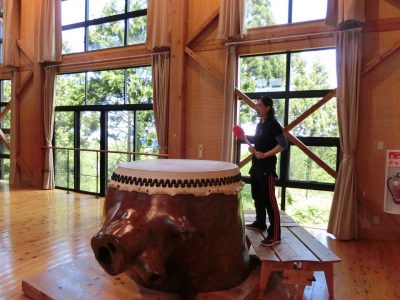Sado Island in the Sea of Japan is the sixth biggest island in Japan next to Okinawa. With a population of only about 55,000, this part of Niigata is a rural area. It is a popular tourist destination for locals, as you find unique nature, history, and culture. There are two mountain ranges in the north and in the south, and the highest peak is 1,172 meters. Find out what you can experience on Sado Island!
Sado Gold Mine

Japan used to produce gold and Marco Polo introduced Japan as a country of gold in his book “La Description du Monde” more than 700 years ago. The Sado gold mine was discovered in 1601 when the island became a territory of the Tokugawa Shogunate. At the peak time, they produced over 400 kg of gold in one year and it was one of the biggest gold mines in the world. The people who were working in the mine were criminals and homeless people who were sent here from the mainland.
After the Meiji Restoration finished the shogunate, the mine was owned by the national government and then sold to Mitsubishi Corporation. In 1989, because the gold was depleted they stopped production. The total length of the mine is 400 km, and about 300 meters are open to the public as a museum. Using dolls, they explain how they made the mine and how they produced the gold.
Toki no Mori (Toki Forest Park)

The Toki bird is a crested ibis. The scientific name of it is Nipponia Nippon which really makes it a unique bird to Japan because Nippon means Japan in Japanese. Unfortunately, the Toki went extinct once because of overhunting and deterioration of the environment which was caused by too much use of chemicals in the field.
In 1999, a couple of crested ibises was gifted from China to Japan and sent to Toki Forest Park where they try to breed the crested ibis. They succeeded to breed in the same year and the number of the crested ibises has been increasing. They say there are about 180 caged ibises and 430 ibises in the wild in Japan. If you visit the park, you can see caged crested ibises, but if you are lucky, you may even see wild ones.
Shukunegi Old Town

Shukunegi is a very well-preserved old town. Sado once flourished with trade as a way port connecting Hokkaido and the southern part of Japan. It was mainly in the 19th century that Shukunegi was a port town. This is where wealthy merchants, ship carpenters, and traders lived.
There are about 100 traditional wooden houses. Some of them are open to the public as museums. If you walk through the town following the very narrow streets, you will be transported back in time to the world as it was over 100 years ago.
If you visit Ogi Folk Culture Museum, you can see a real size model of the wooden trade boat.
Taraibune

Taraibune is a traditional wooden tub boat that’s used for fishing mainly by female ‘captains’. They still use them in small villages to collect seaweed. The tubs are very handy for their purpose because they can change direction easily, but it takes some practise to become good at it.
They operate a short tour in the port of Ogi to try to ride on the boat. Female fisherman will operate the boat and if you want to, you can try to operate it, too. It will be a very special experience.
Kodo Taiko Drumming Group

Sado is home to the world-famous taiko drum group Kodo. Their dormitory is in Ogi, this is where they live together and practice. They have a yearly three-day performance in August called Earth Celebration.
If you make a reservation, you can join a hands-on experience to play the drum. There are huge drums made of natural wood and guests can play them, too.
Sake From Sado Island
Niigata Prefecture produces the most rice in Japan and therefore also produces a lot of sake. There are four sake breweries in Sado. You can visit these breweries and do a sake tasting. Obata Shuzo makes famous sake called Manotsuru. This is the sake that is served to first class passengers of Air France.
Sado Island Information
Access: From Niigata Station (Shinkansen), take a local bus or taxi to Sado-Kisen Niigata Port. It takes about 10 minutes. There are two types of boat to Ryotsu Port in Sado.
Car Ferry takes 2 hours 30 minutes and costs 2,550 yen for one way.
Jet Foil takes 67 minutes and costs 6,640 yen for one way.